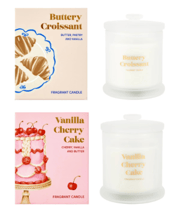Shocking price surge: See how much more you're paying for groceries than a decade ago!
- Replies 9
Many Australians, including members of our Seniors Discount Club, have been managing household budgets for years, if not decades.
You've seen prices rise and fall, but the recent surge in grocery costs has been particularly startling.
A trip down memory lane with supermarket catalogues from the past decade reveals a new reality of product prices that may have many feeling nostalgic for the 'good old days'.
The cost-of-living crisis has been a hot topic, especially in the post-COVID-19 world.
Supermarket catalogues from as recently as four years ago compared to those from a decade ago show a significant jump in prices.
For instance, a 24-pack of Kleenex Complete Clean Toilet Paper ($13.50) that cost just $10 in 2014 now rings in at $13.50 at Woolworths.
Similarly, a 600g block of Tasty Cheese has almost doubled from $6 to $11, on sale from the usual $12.

However, these price hikes are not limited to household staples.
A 30-pack of soft drink that was $19 in 2014, costing about 64 cents per can, is up to $28.30 in 2024 ($47.20 before the sale).
Snack lovers will also feel the pinch, with a bag of 175g Thins chips more than doubling from $2 to $5.
Those with a sweet tooth will also be shocked with Cadbury chocolate bars jumping from $3.50 in 2015 to $5 per 100g almost a decade after, while a 200g-pack of Tim Tam more than doubled from $2 to $5.
Ten years ago, 750ml of olive oil was priced at $8.50. Fast forward to today, and the same amount will set you back a whopping $20.
Coles catalogues dating back to 2014 revealed similar pricing trends, indicating that a decade ago, a loaf of Helga’s Traditional White Bread was priced at only $3, whereas today, the price for the same loaf has increased to $4.90.
Previously, purchasing a 250g-block of Bega cheese at Coles would have set shoppers back a mere $4, but now, the same product commands a price of $7.50.
Surprisingly, the cost of biscuits at Coles has remained relatively stable over the years.
For instance, Arnott's Scotch Finger Biscuits were priced at $2 back in 2014, while today, they are available for $2.50.
With Easter approaching, it's worth noting the change in the cost of seasonal treats.
A 2016 catalogue shows a 20-pack of Cadbury hollow Easter eggs costing $7 or 35 cents each, and in the 2022 catalogues, a 10-pack of Easter eggs was priced at only $3.75, indicating that eggs were approximately the same price back in 2016.
However, in 2024, just two years later, a 24-pack of 'hunting eggs' costs $12.50—currently on sale for $9.50—making each egg 50 cents (39.59 cents with the current sale).
This seasonal price increase recently sparked outrage among shoppers.
The famous Lindt Gold Bunny Milk Chocolate, which was $4 in 2015, now costs $8 (currently on sale at $6.00).
Supermarket pricing has become a significant talking point amidst the inflation and cost-of-living challenges that have affected Australians since 2023.
Although experts acknowledged that it's typical for the prices of goods and services to rise gradually over time, the post-COVID increase had been swift, causing hardship for households nationwide.
Supermarkets are under scrutiny for potentially using their market power to set unfair pricing practices.
Four separate reviews, including a competition watchdog price inquiry, are underway to investigate the conduct of supermarket chains.
Politicians from all sides had been intensifying their scrutiny of the dominant supermarket players in recent months, especially following the disclosure that both Coles and Woolworths reported profits surpassing $1 billion in the last fiscal year.
Inflation, interest rate hikes, soaring fuel prices, and skyrocketing rents have all contributed to the financial pressure on households.
It's no wonder Australians are feeling the pinch at the checkout.
Previously, both Coles and Woolworths denied allegations of engaging in price gouging.
A Woolworths spokesperson stated that the company recognises that many Australian families were facing financial difficulties and seeking relief at the checkout.
‘While looking back at catalogues might see some different prices, what hasn’t changed is our commitment to bringing the best of Australian fresh fruit and vegetables to our customers,’ they said.
‘In the 14 months from November 2021 to January 2023, we received more than 1800 cost increase requests from our long-life suppliers with an average per month 4.5x our pre-Covid volumes.’
‘So there’s always a balance to maintain of paying suppliers fairly, rewarding our team and as well ensuring customers get their Woolies worth when they shop with us,’ they added.
Coles, on the other hand, has yet to comment on the issue.
 Have you noticed these price increases in your own shopping? How have you adjusted your budget to cope with the rising cost of living? Share your experiences and tips in the comments below.
Have you noticed these price increases in your own shopping? How have you adjusted your budget to cope with the rising cost of living? Share your experiences and tips in the comments below.
You've seen prices rise and fall, but the recent surge in grocery costs has been particularly startling.
A trip down memory lane with supermarket catalogues from the past decade reveals a new reality of product prices that may have many feeling nostalgic for the 'good old days'.
The cost-of-living crisis has been a hot topic, especially in the post-COVID-19 world.
Supermarket catalogues from as recently as four years ago compared to those from a decade ago show a significant jump in prices.
For instance, a 24-pack of Kleenex Complete Clean Toilet Paper ($13.50) that cost just $10 in 2014 now rings in at $13.50 at Woolworths.
Similarly, a 600g block of Tasty Cheese has almost doubled from $6 to $11, on sale from the usual $12.

Woolworths’ catalogue from a decade ago showed a significant jump in product prices. Credits: Woolworths
However, these price hikes are not limited to household staples.
A 30-pack of soft drink that was $19 in 2014, costing about 64 cents per can, is up to $28.30 in 2024 ($47.20 before the sale).
Snack lovers will also feel the pinch, with a bag of 175g Thins chips more than doubling from $2 to $5.
Those with a sweet tooth will also be shocked with Cadbury chocolate bars jumping from $3.50 in 2015 to $5 per 100g almost a decade after, while a 200g-pack of Tim Tam more than doubled from $2 to $5.
Ten years ago, 750ml of olive oil was priced at $8.50. Fast forward to today, and the same amount will set you back a whopping $20.
Coles catalogues dating back to 2014 revealed similar pricing trends, indicating that a decade ago, a loaf of Helga’s Traditional White Bread was priced at only $3, whereas today, the price for the same loaf has increased to $4.90.
Previously, purchasing a 250g-block of Bega cheese at Coles would have set shoppers back a mere $4, but now, the same product commands a price of $7.50.
Surprisingly, the cost of biscuits at Coles has remained relatively stable over the years.
For instance, Arnott's Scotch Finger Biscuits were priced at $2 back in 2014, while today, they are available for $2.50.
With Easter approaching, it's worth noting the change in the cost of seasonal treats.
A 2016 catalogue shows a 20-pack of Cadbury hollow Easter eggs costing $7 or 35 cents each, and in the 2022 catalogues, a 10-pack of Easter eggs was priced at only $3.75, indicating that eggs were approximately the same price back in 2016.
However, in 2024, just two years later, a 24-pack of 'hunting eggs' costs $12.50—currently on sale for $9.50—making each egg 50 cents (39.59 cents with the current sale).
This seasonal price increase recently sparked outrage among shoppers.
The famous Lindt Gold Bunny Milk Chocolate, which was $4 in 2015, now costs $8 (currently on sale at $6.00).
Supermarket pricing has become a significant talking point amidst the inflation and cost-of-living challenges that have affected Australians since 2023.
Although experts acknowledged that it's typical for the prices of goods and services to rise gradually over time, the post-COVID increase had been swift, causing hardship for households nationwide.
Supermarkets are under scrutiny for potentially using their market power to set unfair pricing practices.
Four separate reviews, including a competition watchdog price inquiry, are underway to investigate the conduct of supermarket chains.
Politicians from all sides had been intensifying their scrutiny of the dominant supermarket players in recent months, especially following the disclosure that both Coles and Woolworths reported profits surpassing $1 billion in the last fiscal year.
Inflation, interest rate hikes, soaring fuel prices, and skyrocketing rents have all contributed to the financial pressure on households.
It's no wonder Australians are feeling the pinch at the checkout.
Previously, both Coles and Woolworths denied allegations of engaging in price gouging.
A Woolworths spokesperson stated that the company recognises that many Australian families were facing financial difficulties and seeking relief at the checkout.
‘While looking back at catalogues might see some different prices, what hasn’t changed is our commitment to bringing the best of Australian fresh fruit and vegetables to our customers,’ they said.
‘In the 14 months from November 2021 to January 2023, we received more than 1800 cost increase requests from our long-life suppliers with an average per month 4.5x our pre-Covid volumes.’
‘So there’s always a balance to maintain of paying suppliers fairly, rewarding our team and as well ensuring customers get their Woolies worth when they shop with us,’ they added.
Coles, on the other hand, has yet to comment on the issue.
Key Takeaways
- Supermarket catalogues from the past decade showed a significant jump in product prices, illustrating the impact of the cost-of-living crisis post COVID-19.
- Items such as toilet paper, cheese, soft drinks, and chocolate have seen substantial price increases, with some products doubling in cost over the past four to ten years.
- Seasonal items like Easter eggs also demonstrated these price hikes, with costs for traditional treats like the Lindt gold bunny having doubled in recent years.
- Supermarket chains are currently under multiple reviews for their pricing practices amidst allegations of using market power to set unfair prices, as households endure rising expenses across various sectors.







